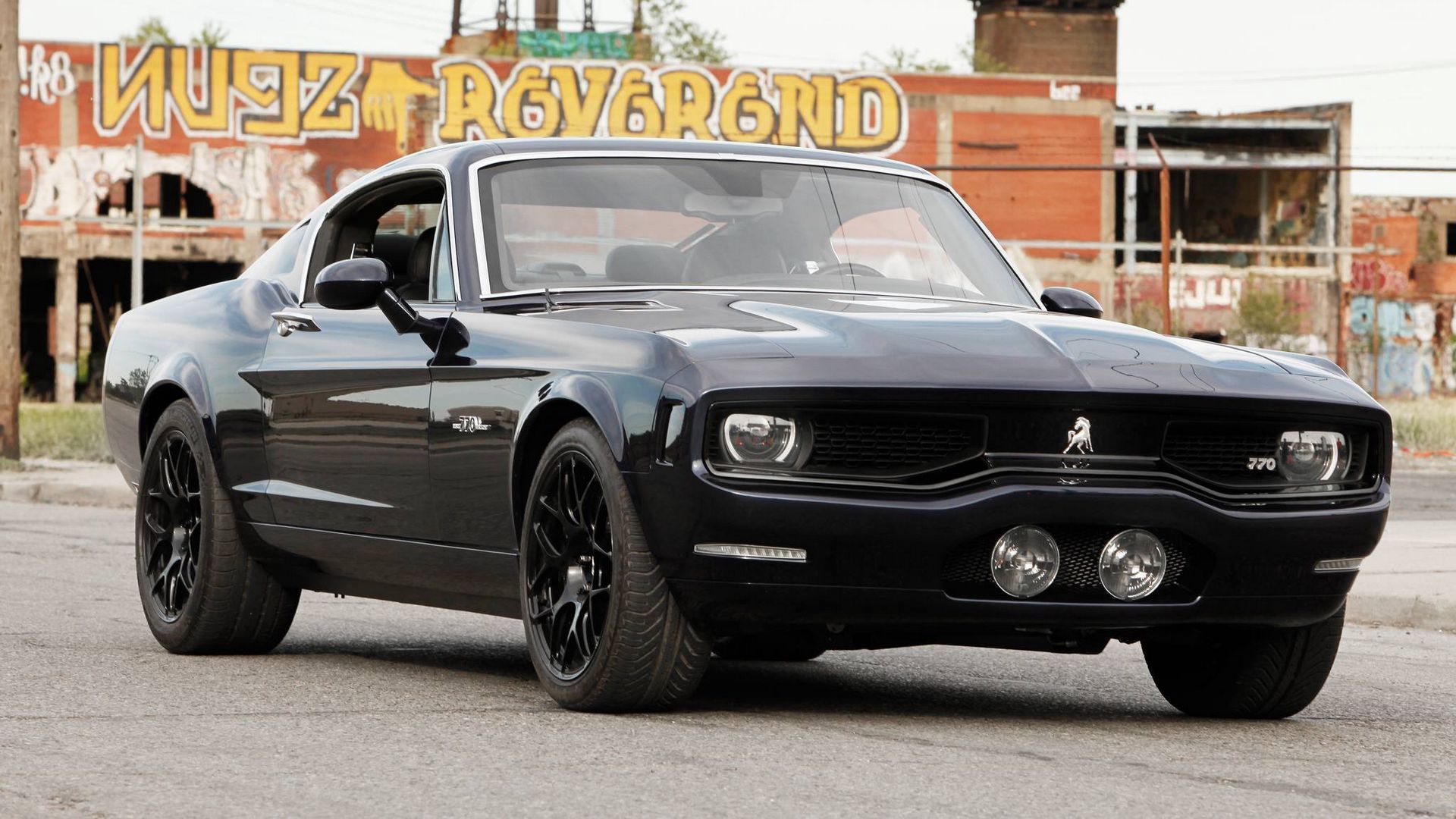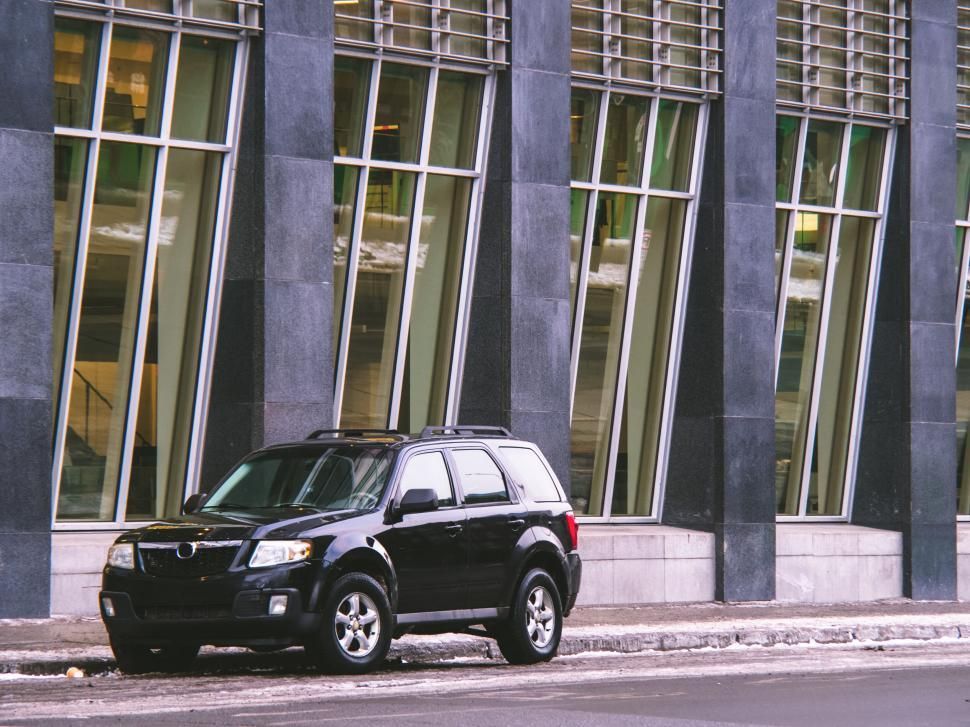
The sweet spot of vehicle ownership often lies somewhere between the initial depreciation curve and the onset of major mechanical failures. For most cars, this honeymoon period extends comfortably beyond the manufacturer’s warranty, allowing owners to enjoy relatively trouble-free driving while building equity in their investment. However, certain vehicles have earned notorious reputations for transforming from reliable transportation into financial black holes once they cross the 80,000-mile threshold or their initial warranty periods conclude.
Understanding which cars become money pits at higher mileages is crucial for both potential used car buyers and current owners planning their automotive future. The 80,000-mile mark represents a critical juncture where many vehicles begin experiencing the failure of expensive components that were designed to last through the warranty period but not necessarily much beyond it. This mileage point often coincides with the expiration of extended warranties, leaving owners fully responsible for increasingly costly repairs.
What makes certain cars particularly problematic after their initial coverage expires isn’t just the frequency of repairs, but often the catastrophic nature of their failures. Unlike economy cars that might gradually decline with predictable maintenance needs, these problematic vehicles tend to experience sudden, expensive failures that leave owners facing repair estimates that exceed their vehicle’s remaining value. The combination of poor reliability, expensive parts, and specialized labor requirements creates the perfect storm for automotive financial disaster. We delve into specific models notorious for these issues, starting with a look at some popular trucks.

1. **Ford F-150 (2004-2008)**Despite its enduring popularity as a best-selling truck, certain generations of the Ford F-150 have proven to be significant financial liabilities once they leave the safety net of their manufacturer’s warranty. The 2004-2008 models, in particular, have garnered a reputation for issues that can quickly escalate into costly repair bills, leaving owners grappling with unexpected expenses. This era of F-150s, while robust in many respects, harbored a few critical design flaws that became apparent over time and mileage.
One of the most widely reported and frustrating problems for owners of these F-150s revolves around spark plug failures. The design of the spark plugs in these engines often led to them breaking off during removal, transforming a routine maintenance task into a complex and expensive extraction procedure. This issue, while seemingly minor, could easily add hundreds of dollars to a simple tune-up, frustrating owners who expected straightforward servicing for their workhorse truck.
Beyond the spark plugs, transmission problems represent another significant concern that plagues the 2004-2008 Ford F-150. Owners frequently report issues such as harsh shifting, delayed engagement, and eventually, complete transmission failures. These failures are not only inconvenient but also incredibly expensive to rectify, often requiring complete rebuilds or replacements that can run into several thousands of dollars. The National Highway Traffic Safety Administration (NHTSA) has recorded numerous complaints related to these issues, underscoring the widespread nature of the problem and the financial strain it imposes on owners.
The combination of these known issues means that while a used Ford F-150 from this vintage might appear to be an affordable option, prospective buyers should proceed with extreme caution. The initial savings on the purchase price can quickly be dwarfed by the accumulating repair costs once the truck’s warranty has expired, cementing its status as a potential money pit. Regular inspections can help, but some of these issues are inherent to the design and will eventually surface.
Car Model Information: 2014 Ford F-150 XLT
Name: Ford F-Series
Caption: 2022 Ford F-150 Lariat Luxury
Manufacturer: Ford Motor Company
Aka: Ford Lobo (Mexico, 1992–present)
Production: 1948–present
Class: Pickup truck#Full-size pickup truck
Layout: Front-engine, rear-wheel-drive layout,rear-wheel drive
Predecessor: 1941 Ford
Categories: All-wheel-drive vehicles, All Wikipedia articles written in American English, All articles that may contain original research, All articles with unsourced statements, Articles that may contain original research from September 2020
Summary: The Ford F-Series is a series of light-duty trucks marketed and manufactured by the Ford Motor Company since model year 1948 as a range of full-sized pickup trucks — positioned between Ford’s Ranger and Super Duty pickup trucks. Alongside the F-150 (introduced in 1975), the F-Series also includes the Super Duty series (introduced in 1999), which includes the heavier-duty F-250 through F-450 pickups, F-450/F-550 chassis cabs, and F-600/F-650/F-750 Class 6–8 commercial trucks.
Get more information about: Ford F-Series
Buying a high-performing used car >>>
Brand: Ford Model: F-150
Price: $17,745 Mileage: 131,097 mi.
Read more about: Don’t Buy These Used Cars: 30 Models Known for Costly Problems
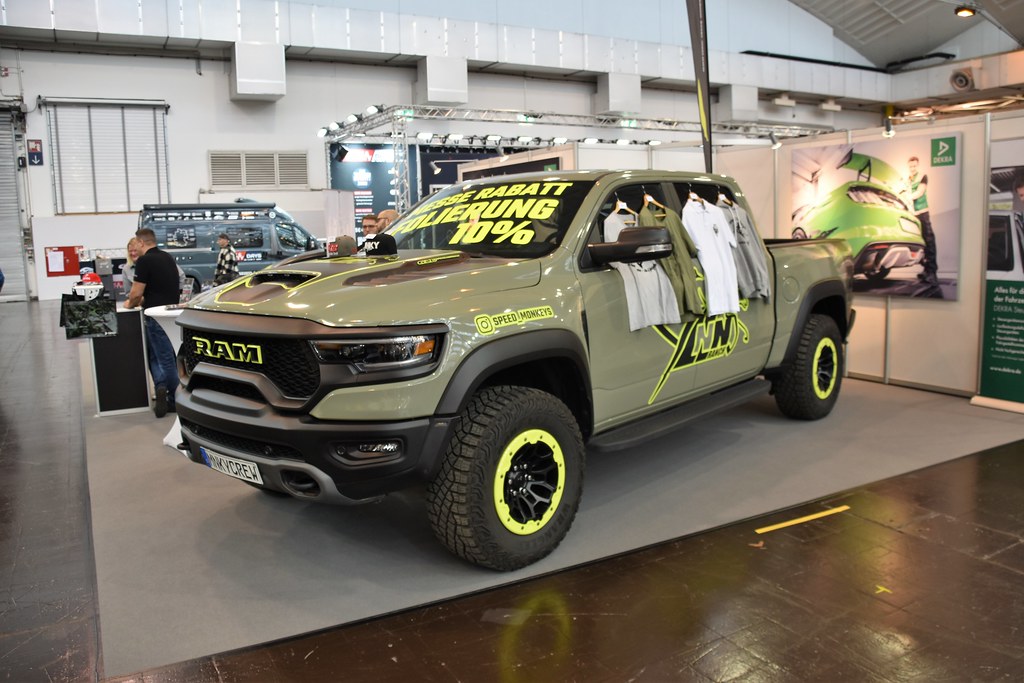
2. **Dodge Ram 1500 (2002-2008)**The Dodge Ram 1500, particularly models produced between 2002 and 2008, has long been celebrated for its powerful engine options and rugged capabilities, making it a favorite among those who need a truck that can handle heavy-duty tasks. However, beneath its muscular exterior, this generation of Ram 1500s hides a propensity for developing expensive problems that often surface shortly after the initial warranty coverage lapses, transforming it from a powerful workhorse into a financial burden.
Among the most frequently cited issues for these trucks are costly electrical problems. Owners report a wide array of electrical gremlins, ranging from seemingly minor nuisances like malfunctioning power windows and door locks to more significant failures involving the instrument cluster, lighting systems, and even critical engine sensors. Diagnosing and repairing these intermittent electrical faults can be incredibly time-consuming and expensive, often requiring specialized diagnostic tools and expertise that drive up labor costs.
Another prevalent and costly issue for the Dodge Ram 1500 from this period is premature brake wear. While brakes are consumable items that require periodic replacement, owners of these trucks often find themselves needing new pads and rotors far more frequently than expected. This accelerated wear can be attributed to various factors, including the truck’s weight and design, but the cumulative cost of repeated brake component replacements can quickly add up, draining owners’ wallets well beyond typical maintenance expectations.
Many owners have openly reported spending significantly on repairs shortly after their purchase, lamenting the unexpected expenses that erode the value of their investment. The allure of a powerful, capable truck like the Ram 1500 can be strong, but the recurring electrical issues and rapid brake component deterioration make these models a cautionary tale for anyone looking for long-term reliability without extensive out-of-pocket costs. It’s a truck that demands constant attention and funding.
Car Model Information: 2024 Volkswagen Tiguan 2.0T SE R-Line Black
Name: Dodge Ram / Ram pickup
Caption: 2017 Ram 1500 Express
Manufacturer: Dodge
ModelYears: 1981–present
Production: October 1980 – present
Class: Pickup truck#Full-size pickup truck,Pickup truck#Heavy-duty pickup truck
Layout: Front-engine, rear-wheel-drive layout,rear-wheel drive
Predecessor: Dodge D series
Categories: 1990s cars, 2000s cars, 2010s cars, 2020s cars, All-wheel-drive vehicles
Summary: The Ram pickup (marketed as the Dodge Ram until 2010 when Ram Trucks was spun-off from Dodge) is a full-size pickup truck manufactured by Stellantis North America (formerly Chrysler Group LLC and FCA US LLC) and marketed from 2010 onwards under the Ram Trucks brand. The current fifth-generation Ram debuted at the 2018 North American International Auto Show in Detroit, Michigan, in January of that year.
Previously, Ram was part of the Dodge line of light trucks. The Ram name was introduced in October 1980 for model year 1981, when the Dodge D series pickup trucks and B series vans were rebranded, though the company had used a ram’s-head hood ornament on some trucks as early as 1933.
Ram trucks have been named Motor Trend magazine’s Truck of the Year eight times; the second-generation Ram won the award in 1994, the third-generation Ram heavy-duty won the award in 2003, the fourth-generation Ram Heavy Duty won in 2010 and the fourth-generation Ram 1500 won in 2013 and 2014, and the current fifth-generation Ram pickup became the first truck in history to win the award four times, winning in 2019, 2020, 2021 and most recently, 2025.
Get more information about: Ram pickup
Buying a high-performing used car >>>
Brand: Dodge Model: Ram 1500
Price: $27,995 Mileage: 9,546 mi.
Read more about: Don’t Buy These Used Cars: 30 Models Known for Costly Problems
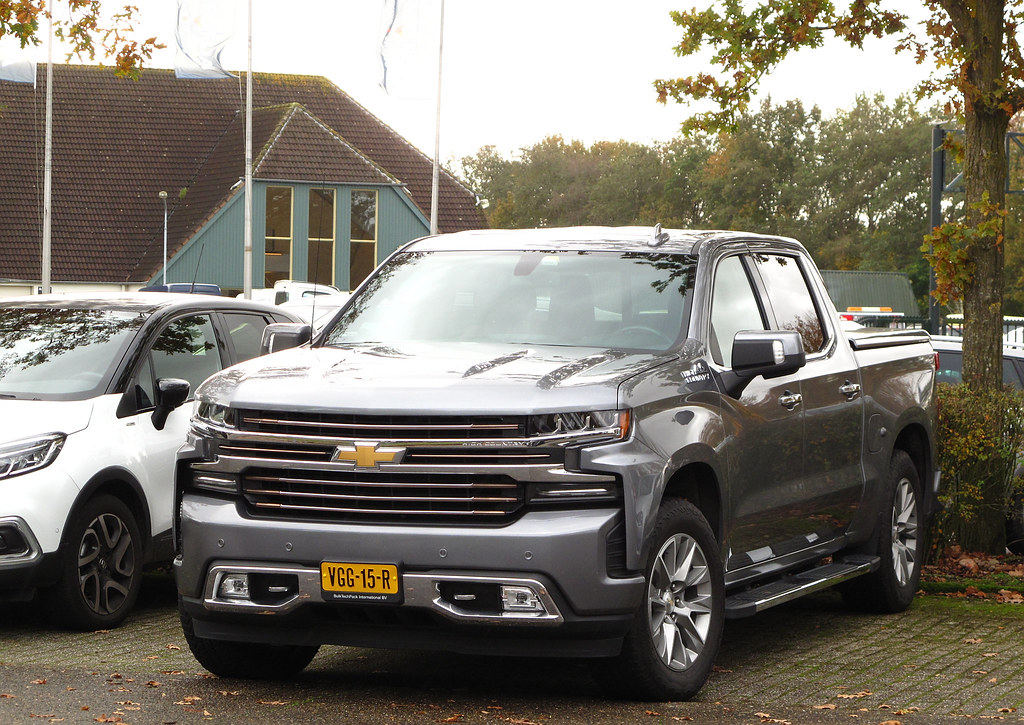
3. **Chevrolet Silverado 1500 (2007-2014)**The Chevrolet Silverado 1500 is generally regarded as a reliable and capable full-size pickup truck, often praised for its durability and strong performance. However, specific model years, particularly those manufactured between 2007 and 2014, have been linked to a few significant and costly issues that can turn this otherwise dependable vehicle into a financial drain for its owners. These problems tend to manifest as the trucks accumulate mileage and exit their warranty periods, catching many owners off guard.
Chief among the concerns for this generation of Silverado 1500s are transmission failures. While Chevrolet transmissions are generally robust, these models have a known susceptibility to internal transmission component wear and eventual failure. Symptoms can range from erratic shifting and slipping gears to complete transmission breakdown, leaving owners with the daunting prospect of expensive repairs. A full transmission replacement or rebuild can easily cost several thousand dollars, representing a major financial setback.
Another substantial expense that owners of these Silverados may face is costly fuel pump replacements. The fuel pump is a critical component for engine operation, and its failure can lead to the truck stalling or refusing to start. Replacing a fuel pump, especially in a full-size truck, is not a simple or inexpensive task, often requiring significant labor and parts costs. These unexpected expenses contribute significantly to the truck’s reputation as a potential money pit after its warranty has expired.
Owners may find themselves facing unexpected expenses that quickly erode the perceived value of their truck. While routine maintenance can prolong the life of any vehicle, the specific vulnerabilities in the transmission and fuel system of the 2007-2014 Chevrolet Silverado 1500 mean that potential buyers should budget for these significant repairs. It’s a classic case of a truck that’s solid on paper but has a few Achilles’ heels when it comes to long-term ownership costs.
Car Model Information: 2024 Volkswagen Tiguan 2.0T SE R-Line Black
Name: Chevrolet Silverado/GMC Sierra
Caption: 2022 Silverado 2500HD High Country
Manufacturer: General Motors
Aka: unbulleted list
Production: 1998–present
Assembly: unbulleted list
Class: unbulleted list
BodyStyle: unbulleted list
Layout: unbulleted list
Predecessor: unbulleted list
Categories: 2000s cars, 2010s cars, 2020s cars, All-wheel-drive vehicles, All Wikipedia articles written in American English
Summary: The Chevrolet Silverado is a range of trucks manufactured by General Motors under the Chevrolet brand. Introduced for the 1999 model year, the Silverado is the successor to the long-running Chevrolet C/K model line. Taking its name from the top trim level from the Chevrolet C/K series, the Silverado is offered as a series of full-size pickup trucks, chassis cab trucks, and medium-duty trucks. The fourth generation of the model line was introduced for the 2019 model year.
The Chevrolet Silverado shares mechanical commonality with the identically related GMC Sierra; GMC ended the use of the C/K nomenclature a model generation prior to Chevrolet. In Mexico, high-trim level versions of the Silverado use the Chevrolet Cheyenne name (not to be confused with the 2003 concept). Competing against the Ford F-Series, Ram pickup, Toyota Tundra, and Nissan Titan, the Silverado is among the best-selling vehicles in the United States, having sold over 12 million trucks since its introduction in 1998 as a 1999 model year.
Get more information about: Chevrolet Silverado
Buying a high-performing used car >>>
Brand: Chevrolet Model: Silverado 1500
Price: $27,995 Mileage: 9,546 mi.
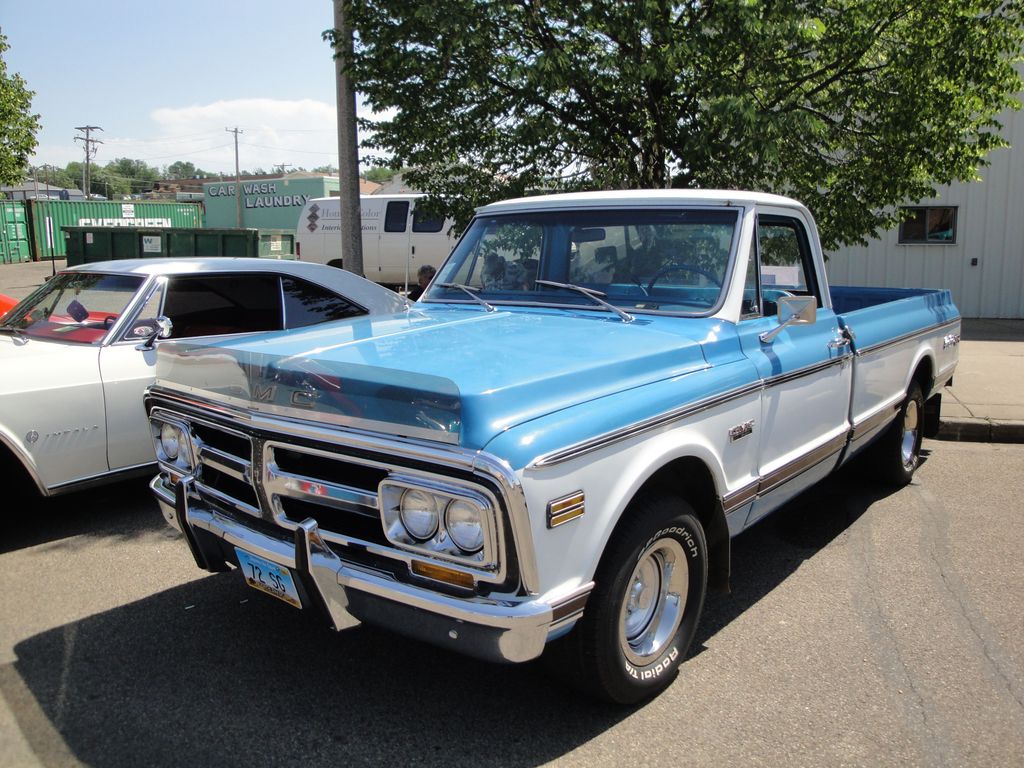
4. **GMC Sierra 1500 (2007-2014)**Sharing its platform and many mechanical components with its Chevrolet counterpart, the GMC Sierra 1500 from the 2007-2014 model years presents a very similar set of challenges for long-term owners. While the Sierra brand is often associated with a slightly more premium feel and refined styling, the underlying mechanical vulnerabilities mean that its potential to become a money pit after the warranty expires is just as significant as the Silverado’s. Owners frequently face unexpected and escalating repair bills.
One of the primary areas of concern for this generation of GMC Sierra 1500 is its fuel system. Problems can include failures of the fuel pump, similar to the Silverado, but also issues with fuel injectors and other components that affect fuel delivery and engine performance. These failures can lead to decreased fuel economy, rough idling, and even engine stalling, requiring immediate and often expensive professional attention. Ensuring the fuel system is operating correctly is paramount for vehicle reliability.
Furthermore, electrical components in the 2007-2014 Sierra 1500 have also proven to be a source of frustration and expense. From issues with the vehicle’s computer modules to wiring harness problems and sensor failures, electrical gremlins can be notoriously difficult to diagnose and rectify. These issues can affect everything from engine management to interior accessories, leading to intermittent problems that require multiple costly diagnostic visits to resolve, draining an owner’s patience and wallet.
Repair bills can quickly escalate, leading to frustrations for owners who expected a more trouble-free ownership experience from a brand like GMC. The interconnected nature of modern vehicle systems means that a single electrical or fuel system fault can sometimes cascade into broader issues, magnifying the overall cost of repairs. For potential buyers, understanding these specific weaknesses is key to avoiding significant financial headaches down the road, making these Sierras a cautious acquisition.
Car Model Information: 2024 Volkswagen Tiguan 2.0T SE R-Line Black
Name: Chevrolet Silverado/GMC Sierra
Caption: 2022 Silverado 2500HD High Country
Manufacturer: General Motors
Aka: unbulleted list
Production: 1998–present
Assembly: unbulleted list
Class: unbulleted list
BodyStyle: unbulleted list
Layout: unbulleted list
Predecessor: unbulleted list
Categories: 2000s cars, 2010s cars, 2020s cars, All-wheel-drive vehicles, All Wikipedia articles written in American English
Summary: The Chevrolet Silverado is a range of trucks manufactured by General Motors under the Chevrolet brand. Introduced for the 1999 model year, the Silverado is the successor to the long-running Chevrolet C/K model line. Taking its name from the top trim level from the Chevrolet C/K series, the Silverado is offered as a series of full-size pickup trucks, chassis cab trucks, and medium-duty trucks. The fourth generation of the model line was introduced for the 2019 model year.
The Chevrolet Silverado shares mechanical commonality with the identically related GMC Sierra; GMC ended the use of the C/K nomenclature a model generation prior to Chevrolet. In Mexico, high-trim level versions of the Silverado use the Chevrolet Cheyenne name (not to be confused with the 2003 concept). Competing against the Ford F-Series, Ram pickup, Toyota Tundra, and Nissan Titan, the Silverado is among the best-selling vehicles in the United States, having sold over 12 million trucks since its introduction in 1998 as a 1999 model year.
Get more information about: Chevrolet Silverado
Buying a high-performing used car >>>
Brand: GMC Model: Sierra 1500
Price: $27,995 Mileage: 9,546 mi.
Read more about: The Definitive Guide: 15 Used Cars to Steer Clear Of for Reliability, Value, and Peace of Mind
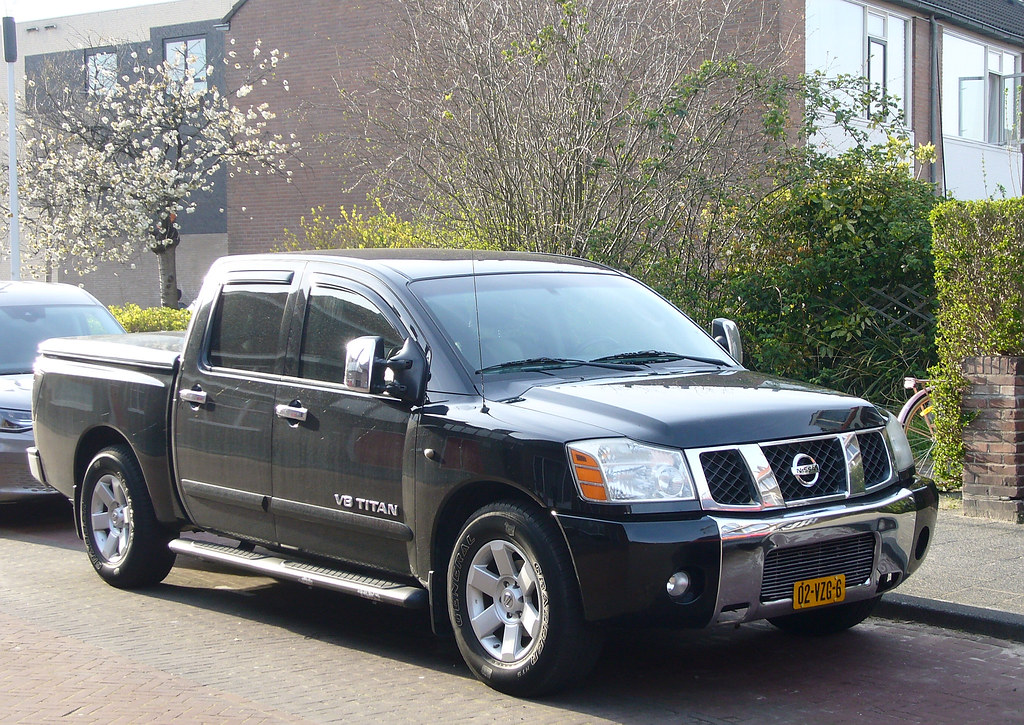
5. **Nissan Titan (2004-2015)**The Nissan Titan, introduced as a robust competitor in the full-size truck market, aimed to challenge the domestic giants with its powerful engine and solid build quality. However, the first generation of the Nissan Titan, spanning from 2004 to 2015, has developed a reputation for long-term reliability issues that often translate into substantial repair costs once the factory warranty is no longer in effect. This truck, while initially impressive, can become a source of considerable financial strain.
At the heart of the Titan’s long-term problems are its engine and transmission. While the V8 engine provides ample power, it has been associated with issues such as exhaust manifold leaks, which are costly to repair, and in some cases, more severe internal engine problems. These engine-related faults can lead to diminished performance, unusual noises, and eventually, the need for extensive and expensive engine work that can quickly exceed the truck’s market value.
The transmission in these early Titans has also been a frequent point of contention for owners. Reports of transmission slipping, harsh shifts, and outright failures are not uncommon as the mileage accumulates. Given the critical role of the transmission, these failures invariably lead to very significant repair bills, often requiring complete transmission replacements that can cost upwards of several thousand dollars. This is a major factor in the Titan’s reputation as a money pit.
Many owners report high ongoing maintenance expenses, noting that the truck seems to require constant attention and costly repairs once it reaches higher mileage. The Nissan Titan, while possessing a robust initial appearance, requires careful consideration for anyone looking for a reliable, low-cost long-term truck. Its tendency towards major powertrain issues makes it a high-risk proposition for used truck buyers seeking economy and dependability beyond the warranty period.
Car Model Information: 2018 Nissan Titan SV
Name: Nissan Titan
Manufacturer: Nissan
Production: September 2003 – November 2024
ModelYears: 2004–2024
Assembly: Canton, Mississippi
Class: Pickup_truck#Full-size_pickup_truck
BodyStyle: 2-door pickup truck,4-door pickup truck
Layout: Front-engine, rear-wheel-drive layout
Platform: Nissan F-Alpha
Caption: 2021 Nissan Titan Crew Cab PRO-4X (Canada)
Categories: 2010s cars, 2020s cars, All-wheel-drive vehicles, All articles with unsourced statements, Articles with short description
Summary: The Nissan Titan was a full-size pickup truck manufactured in the United States for the North American market by Nissan, produced for the 2004–2024 model years.
Get more information about: Nissan Titan
Buying a high-performing used car >>>
Brand: Nissan Model: Titan
Price: $21,685 Mileage: 89,835 mi.
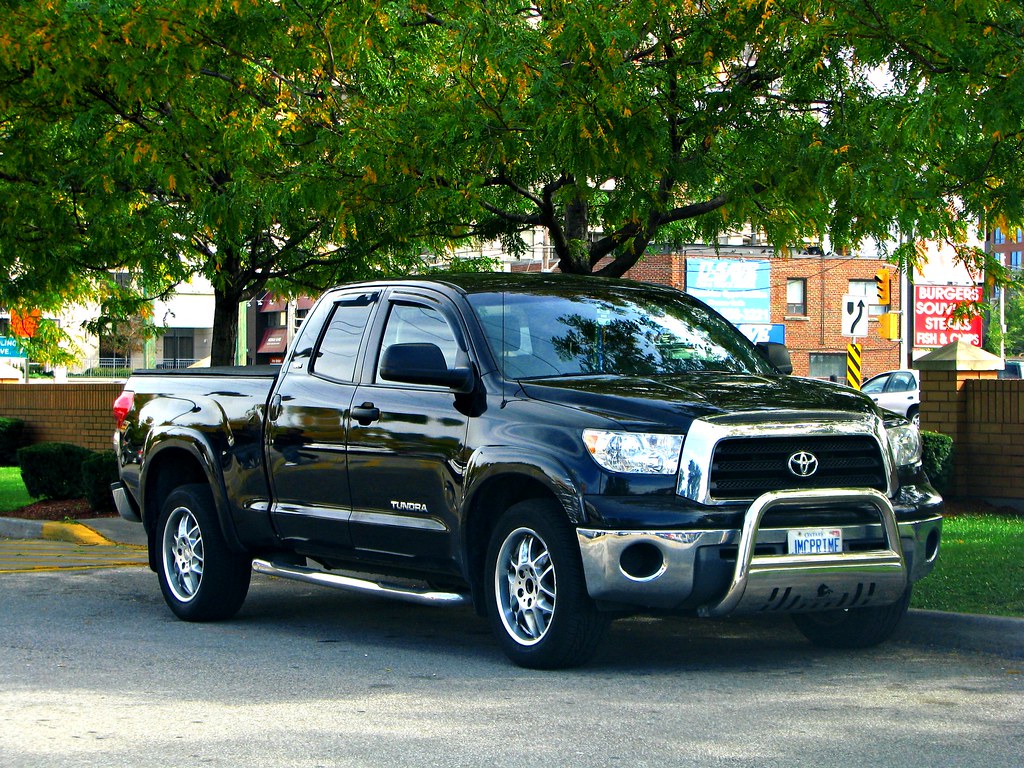
6. **Toyota Tundra (2007-2014)**Toyota has long been synonymous with reliability, with a sterling reputation for producing vehicles that offer exceptional longevity and low ownership costs. This reputation often makes the Toyota Tundra a highly sought-after used truck. However, even the venerable Tundra has certain model years that prove exceptions to the rule, with the 2007-2014 generation exhibiting specific vulnerabilities that can lead to unexpected and costly repairs, particularly after the warranty expires.
One of the most concerning issues for this generation of Toyota Tundra is frame rust. While rust can affect any vehicle, reports suggest that these Tundras are particularly susceptible to severe frame corrosion, especially in regions that use road salt. Significant frame rust can compromise the structural integrity of the vehicle, making it unsafe and extremely expensive to repair, often requiring specialized body shop work that can become cost-prohibitive.
Another widely reported problem is excessive oil consumption. Engines that consume an abnormal amount of oil require constant monitoring and topping off, which is an inconvenience. More importantly, excessive oil consumption can be a symptom of internal engine wear, such as piston ring issues, which can lead to further engine damage and eventually necessitate expensive engine rebuilds or replacements. This issue directly impacts the engine’s long-term health and reliability.
These repair costs can add up, putting a strain on finances, despite Toyota’s general reputation. While a Toyota badge usually implies peace of mind, prospective buyers of 2007-2014 Tundras should be diligent in checking for frame rust and monitoring oil levels. Ignoring these issues can lead to financially debilitating repairs, making this particular Tundra generation a departure from Toyota’s usual bulletproof reliability in the post-warranty phase.
Car Model Information: 2024 Toyota Tundra Hybrid Limited
Name: Toyota Tundra
Manufacturer: Toyota
Production: May 1999 – present
ModelYears: 2000–present
Assembly: San Antonio,Texas
Class: Pickup truck#Full-size pickup truck
Layout: unbulleted list
Related: Toyota Sequoia
Predecessor: Toyota T100
Caption: 2022 Toyota Tundra Limited
Categories: 2000s cars, 2010s cars, 2020s cars, All-wheel-drive vehicles, All Wikipedia articles written in American English
Summary: The Toyota Tundra is a full-size pickup truck manufactured in the United States by the Japanese manufacturer Toyota since May 1999. The Tundra was the second full-size pickup to be built by a Japanese manufacturer (the first was the Toyota T100), but the Tundra was the first full-size pickup from a Japanese manufacturer to be built in North America. The Tundra was nominated for the North American Truck of the Year award and was Motor Trend magazine’s Truck of the Year in 2000 and 2008. Initially built in a new Toyota plant in Princeton, Indiana, production was consolidated in 2008 to Toyota’s San Antonio, Texas, factory.
Get more information about: Toyota Tundra
Buying a high-performing used car >>>
Brand: Toyota Model: Tundra
Price: $54,990 Mileage: 18,032 mi.
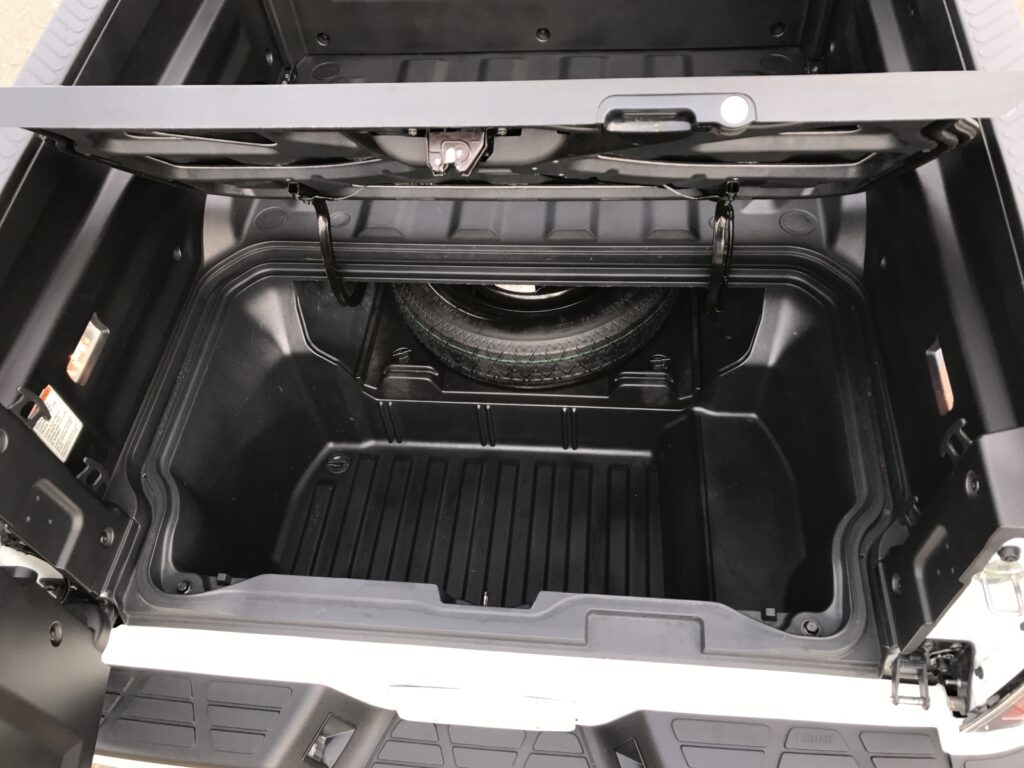
7. **Honda Ridgeline (2006-2014)**The Honda Ridgeline stands out in the truck segment with its unibody construction and versatile car-like driving dynamics, offering a unique blend of practicality and comfort. While known for its reliability as a Honda product, the first generation of the Ridgeline, from 2006 to 2014, has faced a specific set of complaints that can lead to hefty repair bills, challenging the brand’s reputation for trouble-free ownership once the warranty is a distant memory. This truck’s distinct design introduces its own unique long-term vulnerabilities.
One of the primary areas of concern for these Ridgeline models is the transmission system. Owners have reported issues such as delayed shifts, harsh engagement, and in some cases, complete transmission failures. Given Honda’s typically robust engineering, these transmission problems are particularly notable and concerning. Transmission repairs are inherently expensive, and a full replacement or rebuild can cost thousands of dollars, making it a major financial hit for owners.
Beyond the transmission, the suspension system of the 2006-2014 Ridgeline has also been a source of complaints. Components like control arms, bushings, and shocks can wear out prematurely, leading to a degraded ride quality, unusual noises, and compromised handling. While individual suspension component replacements might not seem as catastrophic as a transmission failure, the cumulative cost of addressing multiple suspension issues over time can still become a significant burden.
Owners often incur hefty repair bills, making it a financial burden, especially when these issues surface after the vehicle’s warranty coverage has expired. The unique unibody design, while offering benefits, also means that certain repairs can be more complex and labor-intensive than on traditional body-on-frame trucks. Therefore, while the Honda Ridgeline offers versatility, its first generation warrants careful scrutiny for potential buyers looking to avoid unexpected post-warranty expenditures and ongoing financial strain.
Navigating the landscape of post-warranty vehicle ownership requires astute awareness, especially as some trucks and luxury SUVs reveal their true long-term costs. Having explored initial models, we now turn our attention to additional heavy-duty trucks and a selection of premium SUVs, vehicles whose sophisticated engineering and specialized components can quickly escalate into unforeseen financial challenges once they pass their initial period of manufacturer support. These models, while impressive in their design and capabilities, often harbor inherent weaknesses that manifest as expensive repairs, testing the resolve and budgets of their owners.
We delve deeper into the specific vulnerabilities that transform these vehicles from desirable investments into ongoing financial commitments, empowering you with the knowledge to make informed decisions about your automotive future. Understanding these potential pitfalls is key to avoiding significant financial headaches down the road. Our goal is to highlight the common failures, specialized repair expenses, and catastrophic component issues that define these vehicles as money pits post-warranty.
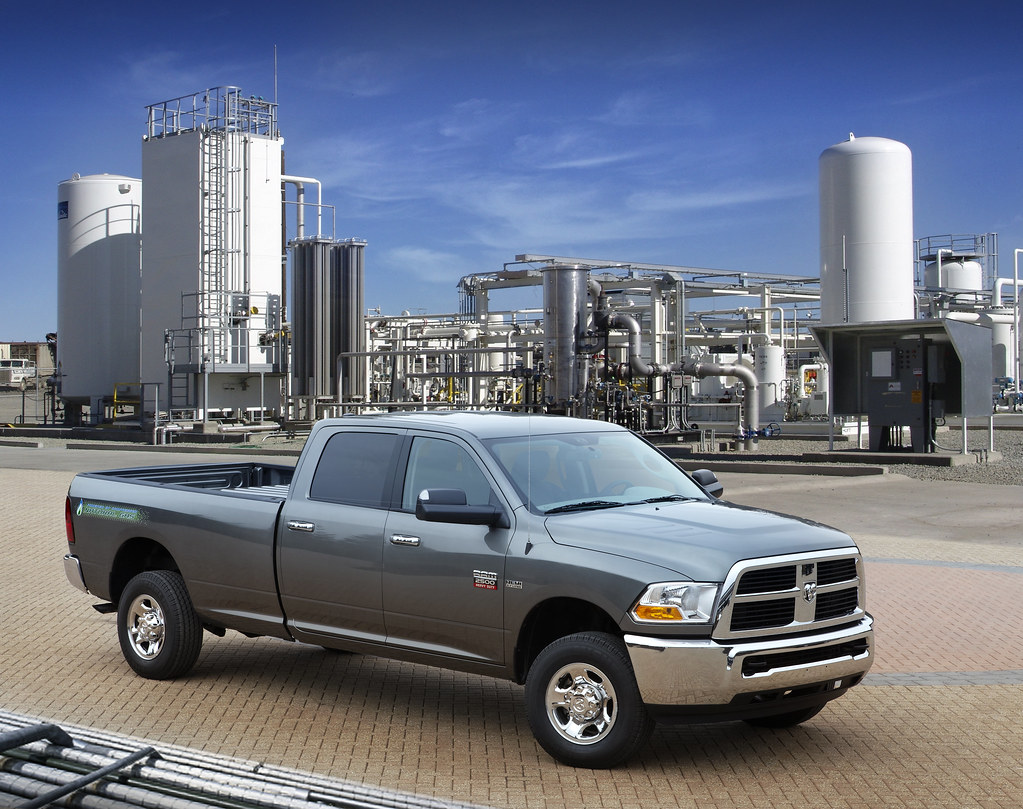
8. **Ram 2500 (2003-2012)**The Ram 2500 series has always been synonymous with robust capability, designed to tackle the most demanding heavy-duty tasks, from towing massive trailers to hauling significant payloads. Its appeal to contractors, farmers, and enthusiasts needing serious muscle is undeniable. However, this dedication to heavy-duty performance, particularly in models produced between 2003 and 2012, often comes with a significant caveat: a notorious reputation for developing costly problems once the manufacturer’s warranty is no longer in effect.
Among the most frequently cited concerns for this generation of Ram 2500 are its diesel engine problems. While known for their torque and durability when operating correctly, the inherent complexity of modern diesel powertrains means that when issues arise, they are often difficult and expensive to diagnose and rectify. Failures in critical engine components can lead to significant performance degradation, reduced reliability, and ultimately, substantial repair bills that undermine the truck’s value, transforming a powerful asset into a financial drain.
Beyond the engine bay, brake failures represent another critical and recurring issue for the 2003-2012 Ram 2500. Given the heavy loads and demanding conditions these trucks are designed to handle, robust braking systems are paramount. However, reports of premature or catastrophic brake failures suggest an accelerated wear pattern or component weakness that can lead to frequent, expensive replacements of pads, rotors, and even more complex components of the braking system. These issues not only present a financial burden but also raise significant safety concerns for owners relying on the truck for serious hauling or towing.
For dedicated users who rely on their Ram 2500 for daily work or serious recreational pursuits, the cumulative effect of these diesel engine and brake-related issues can lead to unexpectedly high repair and maintenance costs. The initial allure of a capable heavy-duty truck can quickly fade when faced with recurring expenses that erode its long-term value, making thorough pre-purchase inspections and a robust contingency fund essential for potential buyers of these specific model years.
Car Model Information: 2022 RAM 2500 Laramie
Name: Dodge Ram / Ram pickup
Caption: 2017 Ram 1500 Express
Manufacturer: Dodge
ModelYears: 1981–present
Production: October 1980 – present
Class: Pickup truck#Full-size pickup truck,Pickup truck#Heavy-duty pickup truck
Layout: Front-engine, rear-wheel-drive layout,rear-wheel drive
Predecessor: Dodge D series
Categories: 1990s cars, 2000s cars, 2010s cars, 2020s cars, All-wheel-drive vehicles
Summary: The Ram pickup (marketed as the Dodge Ram until 2010 when Ram Trucks was spun-off from Dodge) is a full-size pickup truck manufactured by Stellantis North America (formerly Chrysler Group LLC and FCA US LLC) and marketed from 2010 onwards under the Ram Trucks brand. The current fifth-generation Ram debuted at the 2018 North American International Auto Show in Detroit, Michigan, in January of that year.
Previously, Ram was part of the Dodge line of light trucks. The Ram name was introduced in October 1980 for model year 1981, when the Dodge D series pickup trucks and B series vans were rebranded, though the company had used a ram’s-head hood ornament on some trucks as early as 1933.
Ram trucks have been named Motor Trend magazine’s Truck of the Year eight times; the second-generation Ram won the award in 1994, the third-generation Ram heavy-duty won the award in 2003, the fourth-generation Ram Heavy Duty won in 2010 and the fourth-generation Ram 1500 won in 2013 and 2014, and the current fifth-generation Ram pickup became the first truck in history to win the award four times, winning in 2019, 2020, 2021 and most recently, 2025.
Get more information about: Ram pickup
Buying a high-performing used car >>>
Brand: Ram Model: 2500
Price: $57,990 Mileage: 38,249 mi.

9. **Jeep Gladiator (2019-Present)**The Jeep Gladiator entered the market with considerable fanfare, blending the iconic off-road prowess of the Wrangler with the added utility of a pickup bed. Its distinct design and formidable off-road capabilities quickly garnered a loyal following among adventurers and those seeking a unique blend of ruggedness and open-air freedom. However, despite its relatively recent introduction, the Gladiator, particularly models from 2019 to the present, has already begun to show signs of becoming a potential money pit for owners once warranty coverage wanes.
Key among the reported issues for the Jeep Gladiator are problems related to its electrical systems. Modern vehicles, especially those with advanced off-road technologies and numerous creature comforts, rely heavily on complex electrical architectures. Owners have reported a range of electrical gremlins, from seemingly minor issues with infotainment and accessory functions to more critical problems affecting sensors and vehicle control modules. Diagnosing these intermittent electrical faults can be notoriously time-consuming and expensive, often requiring specialized dealer tools and expertise that drive up labor costs significantly.
Transmission problems also represent a significant area of concern for Gladiator owners. While the truck is designed for demanding conditions, reports of transmission-related issues, including erratic shifting, delayed engagement, and even complete failures, have surfaced. Given the critical role of the transmission in both on-road driving and off-road excursions, these failures are not only inconvenient but also incredibly costly to rectify. A complete transmission replacement or rebuild can easily run into several thousands of dollars, representing a major financial hit that can quickly diminish the truck’s overall value.
The combination of persistent electrical system glitches and potential transmission woes means that the Jeep Gladiator, despite its strong initial appeal and capable design, can become a source of considerable financial strain for owners. The high repair costs reported for these issues underscore the importance of understanding long-term reliability trends. For prospective buyers, these recurring problems serve as a cautionary tale, emphasizing the need for a comprehensive pre-purchase inspection and a clear financial strategy for potential post-warranty repairs.
Car Model Information: 2020 Jeep Gladiator Rubicon
Name: Jeep Gladiator (JT)
Aka: Jeep JT (Mexico)
Manufacturer: Jeep
Production: April 2019–present
ModelYears: 2020–present
Assembly: Toledo, Ohio
Designer: Taylor Langhals
Engine: ubl
Transmission: List of Aisin transmissions#Longitudinal rear-wheel drive,Manual transmission
Class: Mid-size,pickup truck
BodyStyle: 4-door pickup truck with removable roof and doors
Related: Jeep Wrangler (JL)
Layout: Front-engine, four-wheel-drive layout
Predecessor: Jeep CJ#CJ-10,Jeep Comanche
Weight: convert
Wheelbase: 137.3 in
Abbr: on
Lk: on
Length: 218.0 in
Width: 73.8 in
Height: convert
Categories: All-wheel-drive vehicles, Articles with short description, CS1 Japanese-language sources (ja), Cars introduced in 2018, Commons category link is on Wikidata
Summary: The Jeep Gladiator is a mid-size pickup truck manufactured by the Jeep division of Stellantis North America (formerly FCA US). It was introduced at the 2018 Los Angeles Auto Show on November 28, 2018, and went on sale in the spring of 2019 as a 2020 model. Based on the same platform as the Wrangler JL, the Gladiator is Jeep’s first pickup truck since the Comanche was discontinued in 1992, although the very similar dual-cab AEV Brute was custom-made using the Wrangler platform from 2013 until 2017 by American Expedition Vehicles under license.
The first markets outside the Americas were Australia and New Zealand. It is now also marketed in China, Japan, South Korea, South Africa as well as in selected nations in South America, Europe, and Southeast Asia.
Get more information about: Jeep Gladiator (JT)
Buying a high-performing used car >>>
Brand: Jeep Model: Gladiator
Price: $34,990 Mileage: 59,884 mi.

10. **Ford Ranger (1998-2011)**The Ford Ranger enjoyed a long and successful run as a compact and then mid-size pickup truck, cultivating a loyal following thanks to its practical size, affordability, and utility. Beloved by those who needed a capable, no-frills workhorse without the bulk of a full-size truck, the Ranger was a common sight on roads for decades. However, specific generations, particularly models produced between 1998 and 2011, have developed a reputation for long-term reliability issues that can lead to significant maintenance costs, transforming this once-dependable vehicle into a financial burden as it ages.
One of the most pervasive and costly issues for the 1998-2011 Ford Ranger is rust. While rust can affect any vehicle, reports suggest that these Rangers are particularly susceptible to severe corrosion, especially in regions that experience harsh winters or coastal environments. Significant rust can compromise the structural integrity of the frame, body panels, and critical suspension components, making the vehicle unsafe and extremely expensive to repair. Addressing extensive rust often requires specialized body shop work that can quickly become cost-prohibitive, forcing owners to consider prematurely retiring their trucks.
In addition to rust, electrical problems have also been a persistent source of frustration and expense for owners of this generation of Ford Ranger. These issues can range from minor annoyances like malfunctioning power accessories, lights, and gauges to more critical failures involving engine sensors and control modules. Diagnosing and repairing intermittent electrical faults can be time-consuming and often requires specialized expertise, leading to escalating labor costs. The cumulative effect of these electrical gremlins can significantly impact the truck’s reliability and overall ownership experience.
The combination of widespread rust issues and recurring electrical problems means that while a used Ford Ranger from this vintage might appear to be an affordable option, prospective buyers should proceed with extreme caution. The initial savings on the purchase price can quickly be dwarfed by accumulating repair costs once the truck’s warranty has expired and the effects of age and environmental exposure take their toll. These factors cement its status as a potential money pit, demanding careful scrutiny and a realistic budget for ongoing maintenance.
Car Model Information: 2022 Ford Ranger XLT
Categories: All set index articles, Articles with short description, Cars introduced in 1982, Commons category link from Wikidata, Ford vehicles
Summary: The Ford Ranger is a compact or mid-size pickup marketed globally by Ford over a series of generations, varying between both in-house or outside development and manufacturing — and with a hiatus in North America from 2011–2018.
Debuting as a compact pickup in North America in 1982 for the 1983 model year, the Ranger was later introduced in some South American countries. From 1998 to 2011, the Ranger nameplate was used for models developed by Mazda for sale outside the North American market. In 2011, Ford introduced the first Ranger based on the T6 platform. Considered a mid-size pickup truck, the model was developed in-house by Ford Australia. In that same year, the North American-market Ranger was discontinued, leaving the T6 platform-based Ranger as the sole Ranger model worldwide.
For the 2019 model year, the Ranger was reintroduced in North America using the globally-marketed T6 model. It is manufactured at the Michigan Assembly Plant at Wayne, Michigan. The Ranger is smaller than the F-150 and larger than the Maverick in the Ford North American pickup truck range, while for markets outside the Americas it is typically the only Ford pickup offered for sale.
The second generation of the T6-based Ranger was released in 2021 for worldwide markets, using a revised T6 platform.
Get more information about: Ford Ranger
Buying a high-performing used car >>>
Brand: Ford Model: Ranger
Price: $27,689 Mileage: 53,000 mi.
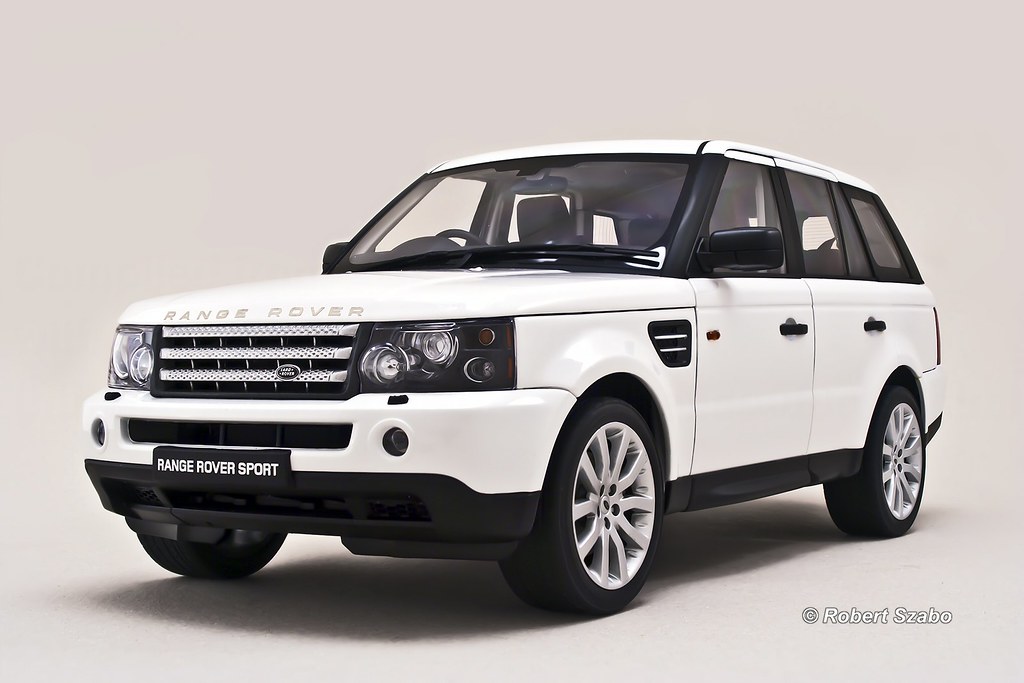
11. **Range Rover Sport (2014-2019)**The Range Rover Sport epitomizes the intersection of luxury and formidable capability, offering owners a vehicle that can transition seamlessly from urban sophistication to challenging off-road adventures. This impressive versatility and refined experience, however, often come at a steep price once the odometer rolls past the 80,000-mile mark. Land Rover vehicles, including the Sport, are known for averaging $12,000 or more annually in maintenance costs, positioning them among the most expensive luxury vehicles to maintain in the automotive marketplace.
The Range Rover Sport’s most notorious weakness often lies in its sophisticated air suspension system, which provides the adjustable ride height crucial for its diverse terrain capabilities. Unfortunately, this system’s complexity becomes a significant liability as components age and fail. Air suspension compressors typically begin failing around 80,000 miles, with replacement costs often exceeding $3,000. The air springs themselves are equally problematic, with individual units costing upward of $800 before labor. When multiple components fail simultaneously, owners can face repair bills approaching $10,000 just to restore proper ride height functionality, a truly staggering sum.
The vehicle’s advanced electronics present another significant challenge for high-mileage owners. The Range Rover Sport incorporates numerous control modules that manage everything from terrain response systems to sophisticated infotainment functions. These modules are notoriously prone to failure and corruption, requiring expensive reprogramming or outright replacement. The central infotainment system, in particular, has earned a reputation for spontaneous failures that can cost $2,500 or more to rectify, frustrating owners who expect seamless integration and reliable operation from a luxury vehicle.
Engine problems vary depending on the powerplant, but all options present potential pitfalls. The supercharged V6 engines suffer from timing chain stretch issues that can lead to catastrophic engine damage if not addressed promptly, with repair costs typically ranging from $4,000 to $7,000 depending on the extent of damage. The V8 engines face their own challenges, including premature wear of valve guides and carbon buildup issues that require expensive cleaning procedures. Transmission reliability, specifically the eight-speed automatic, is another major concern, demonstrating a propensity for valve body failures and torque converter issues that can easily lead to $8,000 or more for rebuilds or replacements, representing a significant percentage of the vehicle’s remaining value.
Perhaps most frustrating for owners is the unpredictable nature of Range Rover Sport failures. Unlike vehicles with predictable maintenance schedules, the Range Rover Sport can present multiple simultaneous problems that compound repair costs exponentially. Notable recalls, including fixes to the upper suspension arm, transmission shifting into neutral while driving, doors opening unexpectedly, and passenger airbag issues, highlight the breadth of potential safety and reliability concerns that plague these vehicles as they age, making long-term ownership a financially demanding endeavor. The cooling system also represents a significant vulnerability, with common water pump failures leading to potential catastrophic engine damage if not addressed quickly, pushing repair costs well beyond $15,000 if overheating occurs.
Read more about: Buyer Beware: These 12 Crossovers Turn into Money Pits Past 80,000 Miles
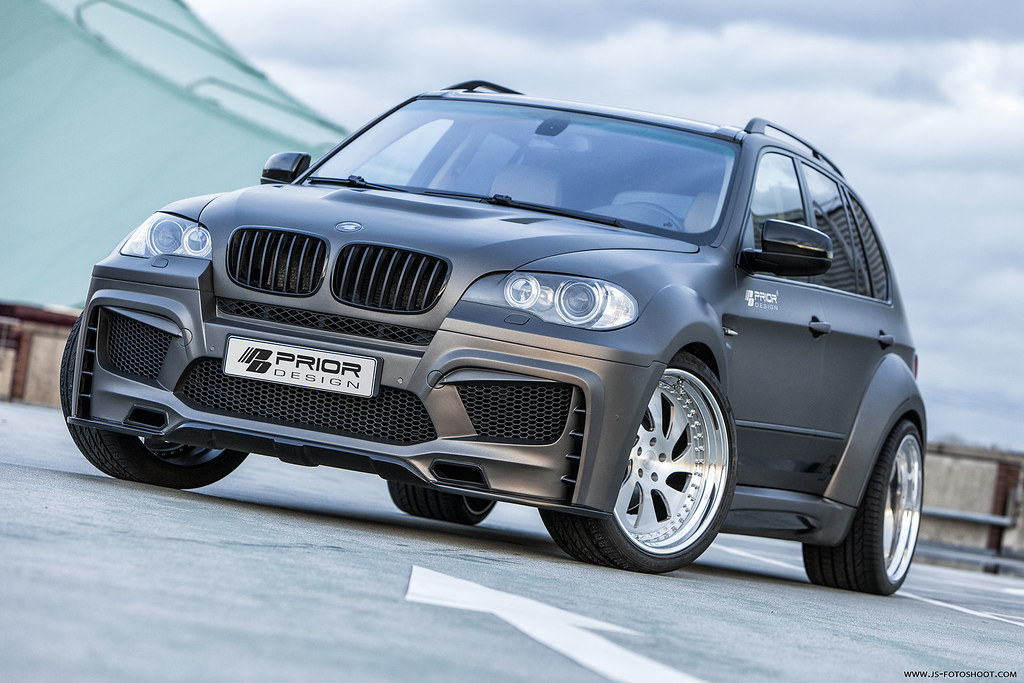
12. **BMW X5 (2014-2018)**The BMW X5 represents German engineering at its finest, combining exhilarating performance, luxurious comfort, and undeniable practicality in a package long considered a benchmark in the luxury SUV segment. Its initial appeal is powerful, but BMW maintenance costs, ranging from $1,200 to $2,500 annually, can escalate dramatically once the vehicle surpasses 80,000 miles, transforming the X5 from a symbol of success into a considerable financial burden for its owners.
The X5’s sophisticated all-wheel-drive system, while providing exceptional traction and handling characteristics when new, becomes a significant liability as mileage accumulates. The transfer case, which precisely distributes power between the front and rear axles, is particularly prone to failure around the 80,000-mile mark. Transfer case rebuilds typically cost between $4,000 and $6,000, while complete replacements can exceed $8,000. The system’s inherent complexity often means that even seemingly minor failures require extensive disassembly, inflating labor costs substantially and adding to the overall expense.
BMW’s commitment to advanced technology, particularly its electronic components, can become problematic as systems age and fail. The X5’s iDrive system, while revolutionary upon its introduction, has proven susceptible to hard drive failures and software corruption that can disable multiple vehicle functions, from navigation to climate control. Replacement of the iDrive system can cost upward of $3,500, with additional expenses for programming. The vehicle’s numerous sensors and control modules, while enhancing functionality, also create multiple points of failure that can result in expensive diagnostic sessions and component replacements, leading to ongoing frustrations and costs.
The X5’s engine lineup, comprising both turbocharged six-cylinder and V8 options, presents varying degrees of long-term reliability challenges. The turbocharged six-cylinder engines frequently suffer from high-pressure fuel pump failures that can leave drivers stranded and potentially cause engine damage, with replacement costs typically ranging from $2,000 to $3,500, including programming requirements. The more powerful V8 engines face their own unique challenges, including timing chain guide wear that can result in catastrophic engine damage if not addressed proactively, often necessitating major engine work.
Air suspension, an available feature on higher trim levels, represents another potential financial pitfall. The system’s air springs and compressors have proven to be unreliable, with failures commonly occurring around 80,000 miles. Individual air spring replacement costs approximately $1,500 per corner, while compressor failures can add another $2,000 to repair bills. Many owners ultimately opt to convert to conventional springs and struts, which, while less expensive long-term, means sacrificing one of the X5’s key luxury and performance features. The propensity for multiple simultaneous failures means that the X5 can overwhelm owners financially, with repair estimates often exceeding the vehicle’s remaining value due to expensive parts and specialized labor.
Car Model Information: 2019 BMW X5 xDrive40i
Name: BMW X5
Manufacturer: BMW
Class: Mid-size,luxury vehicle,crossover SUV
BodyStyle: SUV
Production: 1999–present
Layout: Front-engine, four-wheel-drive layout,Front-engine, rear-wheel-drive layout
Categories: 2000s cars, 2010s cars, All-wheel-drive vehicles, All articles with unsourced statements, Articles with short description
Summary: The BMW X5 is a mid-size luxury crossover SUV produced by BMW. The X5 made its debut in 1999 as the E53 model. It was BMW’s first SUV. At launch, it featured all-wheel drive and was available with either a manual or automatic gearbox. The second generation was launched in 2006, and was known internally as the E70. The E70 featured the torque-split capable xDrive all-wheel drive system mated to an automatic gearbox. In 2009, the X5 M performance variant was released as a 2010 model.
BMW marketed the X5 officially as a “Sports Activity Vehicle” (SAV), rather than an SUV, to indicate its on-road handling capability despite its large dimensions. The X5 signaled a shift away from the utilisation of body-on-frame construction, in favour of more modern monocoque chassis construction. Although the Mercedes-Benz M-Class was introduced more than a year prior to the X5, the X5 was the first to utilise a monocoque chassis. The M-Class used body-on-frame construction until its second generation.
The X5 is primarily manufactured in North America, at BMW Group Plant Spartanburg. Assembly operations also took place in Russia by Avtotor until February 2022, along with operations in India, Indonesia, Malaysia, and Thailand. The X5 is also modified for armoured security versions, at the BMW de México Toluca plant.
The automaker’s SAV series, which was started by the X5, has expanded with derivations of other number-series BMWs. This began in 2003 with the X3, and continued in 2008 with the X6 (which shares its platform with the X5).
Get more information about: BMW X5
Buying a high-performing used car >>>
Brand: BMW Model: X5
Price: $26,888 Mileage: 93,394 mi.
Read more about: Buyer Beware: These 12 Crossovers Turn into Money Pits Past 80,000 Miles
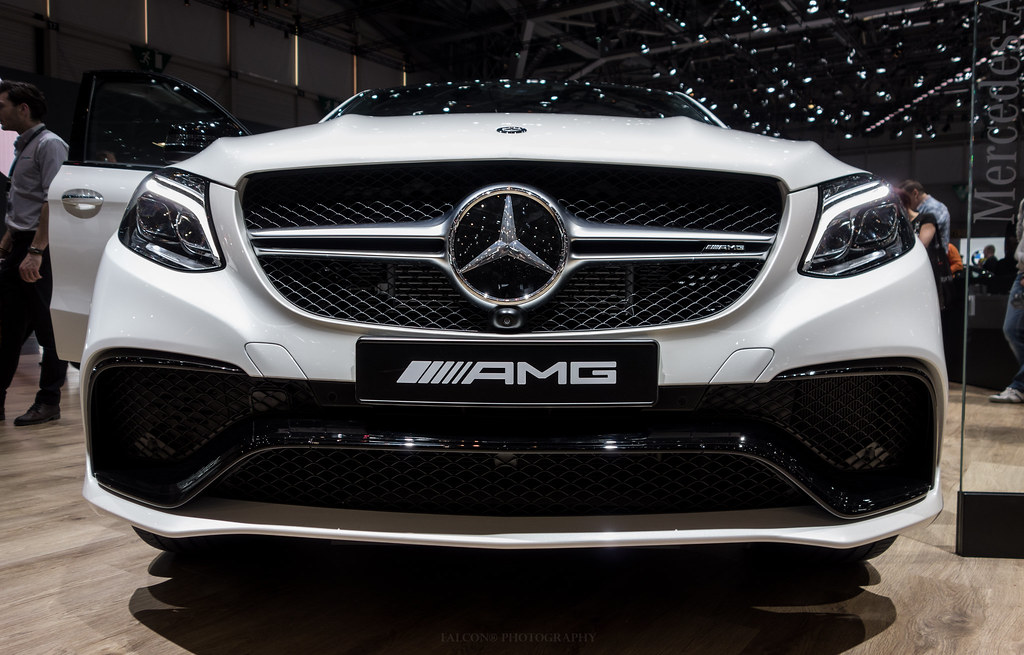
13. **Mercedes-Benz GLE (2016-2019)**The Mercedes-Benz GLE stands as a paragon of luxury SUV engineering, offering a compelling combination of refined comfort, dynamic performance, and cutting-edge technology that few competitors can truly match. Its initial ownership experience is often one of pure indulgence. However, this sophisticated packaging comes with a hidden cost that becomes dramatically apparent once the odometer surpasses 80,000 miles. While Mercedes-Benz maintenance typically ranges between $1,000 and $2,000 annually, these figures can multiply dramatically when major components begin failing in the vehicle’s second decade of service.
The GLE’s advanced air suspension system, branded as AIRMATIC, is a cornerstone of its exceptional ride quality and adjustable ground clearance, enhancing both comfort and off-road capability. Unfortunately, this very complexity becomes its greatest weakness as components age. Air springs typically begin developing leaks around 80,000 miles, with replacement costs ranging from $1,200 to $2,000 per corner. The system’s compressor, vital for maintaining proper air pressure, commonly fails around the same mileage interval, adding another $2,500 to repair costs. When multiple components succumb simultaneously, owners can easily face air suspension repair bills exceeding $8,000.
The vehicle’s sophisticated electronics present another significant challenge for high-mileage owners. Mercedes-Benz incorporates numerous intricate control modules that manage everything from engine performance to the array of cabin comfort and safety systems. Electronic and sensor malfunctions, particularly in advanced driver assistance features, require precise recalibration or costly repairs. The central command system, which governs infotainment and vehicle settings, has demonstrated susceptibility to hard drive failures that can cost $3,000 or more to rectify, disrupting essential functionalities.
Engine reliability varies significantly depending on the powerplant selection within the GLE lineup. The turbocharged four-cylinder engines, while efficient when functioning properly, suffer from turbocharger failures that typically occur around 90,000 miles. Turbocharger replacement costs can range from $3,000 to $5,000, including associated componentry and labor. The V6 engines face their own timing chain stretch issues that can result in catastrophic engine damage if not addressed promptly, with repair costs often exceeding $6,000. These engine-related expenses quickly add up, challenging the vehicle’s luxury proposition.
The GLE’s nine-speed automatic transmission, while praised for its smoothness and responsiveness during normal operation, has proven problematic as mileage accumulates. Valve body failures and torque converter issues become increasingly common after 80,000 miles, often requiring complete transmission rebuilds that can cost $7,000 or more. The transmission’s complexity means that even minor internal failures often necessitate major repairs due to the integrated nature of its components. Additionally, oil leaks, while less frequent than in some other luxury brands, are still an issue in high-mileage models, with sophisticated engine bay packaging making leak repairs particularly expensive due to extensive disassembly requirements.
Read more about: Buyer Beware: These 12 Crossovers Turn into Money Pits Past 80,000 Miles
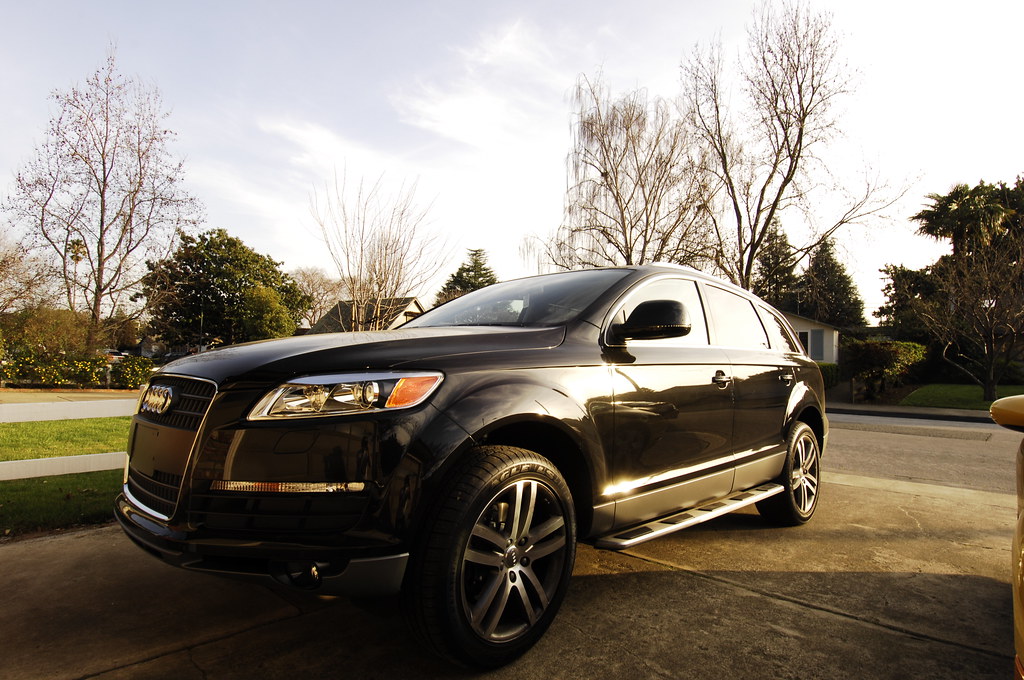
14. **Audi Q7 (2016-2019)**The Audi Q7 embodies Germanic luxury SUV engineering at its most refined, offering a perfect blend of performance, cutting-edge technology, and practicality that appeals to discerning buyers seeking the ultimate family hauler. Its initial promise is one of sophisticated, dependable motoring. However, this intricate engineering becomes a double-edged sword once the vehicle accumulates 80,000 miles, as complex systems begin experiencing failures that can quickly transform the Q7 from reliable transportation into an expensive and demanding maintenance nightmare.
Audi’s renowned Quattro all-wheel-drive system provides exceptional traction and handling characteristics that distinguish the Q7 from many competitors. Unfortunately, this system’s complexity creates multiple potential failure points that become problematic as mileage increases. The rear differential, in particular, has proven susceptible to premature wear, with rebuilds typically costing between $4,000 and $6,000. The system’s center differential and associated transfer case components present similar challenges, often requiring expensive repairs or replacements around the 80,000-mile threshold, significantly impacting the vehicle’s long-term operational costs.
The Q7’s advanced air suspension system, while contributing significantly to its exceptional ride quality and load-leveling capabilities, represents one of the vehicle’s most expensive potential failure points. Air springs commonly develop leaks around 80,000 miles, with individual replacements costing approximately $1,500 per corner. The system’s compressor and associated control modules add additional complexity and expense, with complete system failures often requiring repair investments exceeding $8,000. This highly integrated system can quickly deplete an owner’s budget.
Engine reliability presents varying challenges depending on the powerplant selection. The supercharged V6 engines are particularly prone to carbon buildup issues, which necessitate expensive cleaning procedures every 40,000 to 60,000 miles. These cleaning services typically cost between $800 and $1,500 but are essential for maintaining proper engine performance and preventing more severe issues. The turbo diesel engines, while fuel-efficient, face their own unique challenges including diesel particulate filter failures and emissions system problems that can result in repair costs exceeding $5,000, adding another layer of complexity to maintenance.
The Q7’s sophisticated electronics and infotainment systems, while impressive when functioning properly, create numerous potential failure points as components age. The Multi Media Interface (MMI) system has demonstrated susceptibility to hard drive failures and software corruption that can disable multiple vehicle functions, from navigation to climate control. Complete MMI replacement can cost upward of $4,000, while even minor software issues often require expensive dealer programming procedures. These high-tech features, once a luxury, become a liability.
Perhaps most concerning for Q7 owners is the vehicle’s propensity for experiencing multiple simultaneous problems that compound repair costs exponentially. The integrated nature of the Q7’s systems means that single component failures can cascade into related problems throughout the vehicle. Additionally, Audi’s requirement for proprietary diagnostic equipment and specialized technician training means that even routine maintenance becomes expensive, with independent repair options limited by the vehicle’s sophisticated technology requirements, firmly establishing the Q7 as a post-warranty money pit.
Car Model Information: 2017 Audi Q7 3.0T Premium
Name: Audi Q7
Manufacturer: Audi AG
Production: November 2005–present
ModelYears: 2006–present
Class: Full-size,luxury SUV
BodyStyle: SUV
Layout: Longitudinal engine,front-engine, four-wheel-drive
Sp: uk
Categories: 2010s cars, 2020s cars, All-wheel-drive vehicles, All Wikipedia articles written in British English, All articles with dead external links
Summary: The Audi Q7 is a crossover SUV made by the German manufacturer Audi, unveiled in September 2005 at the Frankfurt Motor Show. Production of this seven-seater SUV began in November 2005 at the Volkswagen Bratislava Plant in Bratislava, Slovakia.
The Q7 was the first SUV sold by Audi and went on sale in 2006. Later, Audi’s second SUV, the Q5, was unveiled as a 2009 model. Audi has since unveiled a third SUV model, the Q3, which went on sale in the third quarter of 2011, and a fourth SUV model, the Q2, which went on sale in November 2016. The Q7 shares a Volkswagen Group MLB platform and chassis with the Bentley Bentayga, Lamborghini Urus, Porsche Cayenne and the Volkswagen Touareg.
The Q7 is the second largest vehicle from Audi, being surpassed by the Q6 since 2022. While the Q7 has been the flagship SUV in Audi’s product portfolio, a top-of-the-line model with a lower roof, called the Audi Q8, was released in 2018.
It was one of the vehicles involved in the Volkswagen emissions scandal, with the company ordered to buy back some of the affected cars manufactured between 2009 and 2012. The Q7 is also subject to hundreds of NTSB complaints with many relating to potentially catastrophic engine failure issues, and a class-action lawsuit related to squealing brakes.
Get more information about: Audi Q7
Buying a high-performing used car >>>
Brand: Audi Model: Q7
Price: $14,950 Mileage: 95,081 mi.
Read more about: Buyer Beware: These 12 Crossovers Turn into Money Pits Past 80,000 Miles
Understanding which vehicles transition from reliable assets to financial burdens after their warranties expire is not just about avoiding bad purchases; it’s about making informed decisions that safeguard your investment and peace of mind. The narratives of these trucks and luxury SUVs serve as potent reminders that initial appeal or brand prestige don’t always equate to long-term affordability. For those considering a used vehicle or looking to extend the life of their current one, this comprehensive review underscores the paramount importance of thorough pre-purchase inspections, diligent maintenance, and a realistic budget for potential repairs. Arming yourself with this knowledge is the most effective way to navigate the complexities of vehicle ownership and ensure that your chosen ride remains a source of convenience, not financial distress.



